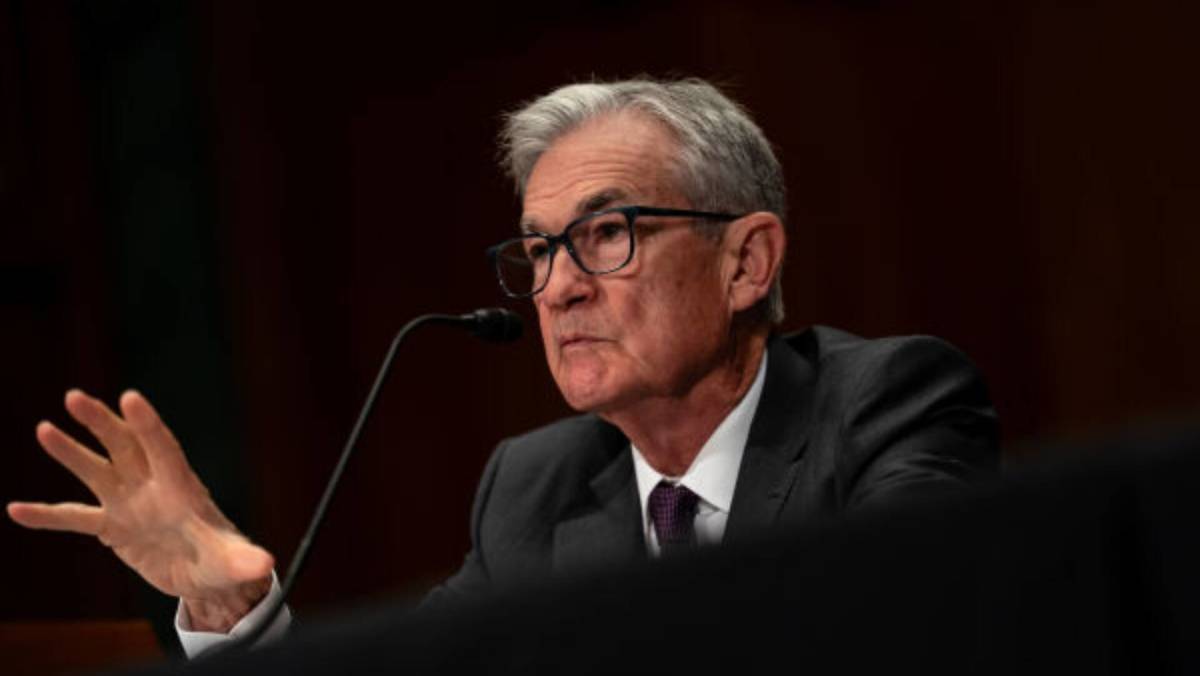The S&P 500 and Nasdaq are surging 1.5% and 1.7% at mid-day on Aug. 22 after encouragingly dovish comments from Federal Reserve Chairman Jerome Powell at the Fed’s annual meeting in Jackson Hole, Wyoming.
“The Federal Reserve chair changed his dovish tune in comments from Jackson Hole and the market is responding,” wrote Wall Street veteran analyst Stephen Guilfoyle on TheStreet Pro.
The Fed has been under intense pressure to cut rates, with the White House jawboning for Chairman Powell’s removal while also seeking to reshape the committee that votes on interest rate policies.
However, Powell and other members of the Federal Open Market Committee tasked with monetary policy have left rates unchanged in 2025 over inflation fears.
Most of Wall Street expects the Fed to cut interest rates at its next meeting in September. The CME’s FedWatch tool saw chances for a quarter-percentage-point rate cut on September 17 surge earlier this month following lackluster jobs data, fueling a stock market rally through mid-month.
However, hotter-than-hoped Consumer Price Inflation data for July showed inflation climbing again, causing the CME’s prediction to tumble this past week into the 70% range. This contributed to six consecutive losses on the Nasdaq Composite and five consecutive down days on the S&P 500.
After Chair Powell left the door open at Jackson Hole to September rate cuts, we’re experiencing yet another swing. The S&P 500 and Nasdaq recovered recent losses and flirted with all-time highs again.

Image source: Kent Nishimura/Getty Images
A boxed in Fed causes investor uncertainty
Lower rates are good for the economy because they mean less interest paid on loans and more money freed up for discretionary and business investments.
In short, the lower the Fed sets the bar on interest rate policy, the more likely US economic activity will soar, as measured by GDP, lifting corporate revenue and profits—the lifeblood of higher stock prices—with it.
Related: China pushes back after Nvidia deal sparks controversy
Given that backdrop, the S&P 500’s back-to-back 20%-plus returns in 2023 and 2024, including a nearly 25% return last year, aren’t surprising. The Fed’s hawkish rate hikes to fight inflation in 2022 and 2023 caused job losses to increase, leading many to anticipate lower rates and more profits.
It’s been a different story in 2025. The Fed cut rates in October, November, and December of 2024 to support the jobs market, but stopped its rate cut plans this year over concerns that inflation would already start climbing again because of tariffs.
President Trump has enacted a slate of higher-than-expected tariffs since February. Tariff announcements caused the S&P 500 to lose 19% from its mid-February high to its low in April, when the President paused most reciprocal tariffs to allow for trade negotiations.
Stocks have moved in a beeline higher since then, with the S&P 500 gaining about 30% and the Nasdaq Composite over 40%, mainly on expectations that economic slowing would force the Fed’s hands to lower rates this fall.
Fed Chairman Powell’s speech sends stocks higher
Many worried that Powell would double down on hawkishness in his Jackson Hole speech, pouring cold water on the likelihood of a September cut.
Related: Hyperscalers’ AI spending boom isn’t over, says analyst
Instead, Powell left the door open to a rate cut on September 17, resparking market fervor and causing the CME FedWatch tool to reset chances.
“With [interest rate] policy in restrictive territory, the baseline outlook and the shifting balance of risks may warrant adjusting our policy stance,” said Powell.
After Powell’s comments, the probability of a rate cut spiked to 89% from 75% yesterday, returning it to the levels seen last week before stocks started sliding.
“Powell also acknowledged that he now has greater confidence that the inflationary effects on tariff-impacted goods prices will be relatively short in nature,” said Guilfoyle.
Meanwhile, the 10-year Treasury bond yield, a benchmark for risk-free return, fell to 4.26%, roughly to where it was in mid-August before stocks, especially tech stocks that are highly sensitive to rates, fell.
With less competition for assets from Treasury yields and growing optimism again that corporate profits could be heading higher, stocks found their footing, with big-cap technology once again leading the charge.
The Roundhill Magnificent Seven ETF (MAGS) is up 2%, while the SPDR Semiconductor ETF (XSD) is up 4.3%, led by its largest holding, Credo Technology Group (CRDO) , which is up 3.3% and its second-largest holding, (AMD) , which is up 2.3%. Nvidia, which reports its latest quarterly results on August 27, is up less ahead of its quarterly earnings results on Aug 27, rising 1.4%.
“Technology is strong as both the semiconductors and software stocks are rallying. Mortgage companies and Asset Managers are flying. The Banks are acting well too,” said Guilfoyle.
Related: Intel investment under fire—US officials respond
#Fed #Powell039s #message #interest #rates #sends #stocks #soaring